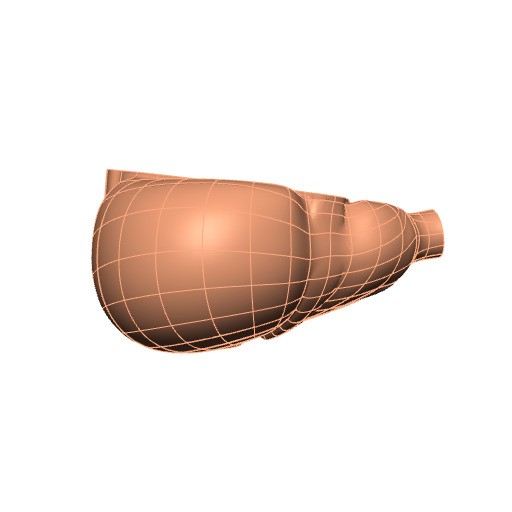Generic human cecum scaffold
In this workspace we have the mapping tool provenance data file needed to produce the generic human cecum scaffold for the SPARC project. The mapping tool will be accessible from the release download page on the SPARC Portal.

The cecum scaffold is designed topologically as a tube that is closed on one end with an inlet cylindrical tube representing the ileum. The scaffold is defined by a network layout which follows the path of a cecum traced from an image, which could be obtained from photography, CT or MRI. The scaffold captures the haustral sacs appearance due to presence of tenia coli. The cecum scaffold's haustra are currently very regular, and are representative rather than matching any individual. The ability to control dimensions such as diameter and wall thickness of the ileum and cecum, and tenia coli properties, as well as variations of these properties throughout the entire length of the cecum allows the scaffold to be configurable for different network layout and sizes to support different species and individuals.
The human cecum scaffold is created based on average dimensions and images obtained from literature.
Four wall layers (mucosa, submucosa, circular muscle, and longitudinal muscle) are added to the human cecum scaffold. The outer surface of the scaffold is annotated as the serosa.
The cecum scaffold defines the geometric coordinates. The geometric coordinates field gives an approximate, idealized representation of the cecum shape for the species, which is intended to be fitted to actual data for a specimen.
Please see the SPARC Portal for more details about the SPARC project.

